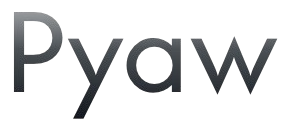The Art of Qualifying Leads: Focusing on High-Value Prospects
Not all leads are created equal. The ability to quickly and accurately qualify leads can mean the difference between a thriving sales career and one filled with wasted time and missed opportunities. Let's dive into the art of lead qualification and explore how to focus your energy on high-value prospects.
Understanding Lead Qualification
Lead qualification is the process of determining whether a potential customer fits your ideal buyer profile and is likely to make a purchase. It's about separating the wheat from the chaff, allowing you to focus your limited time and resources on the most promising opportunities.
The BANT Framework: A Classic Approach
One time-tested method for qualifying leads is the BANT framework:
- Budget: Does the prospect have the financial resources to purchase your product or service?
- Authority: Is your contact the decision-maker, or can they influence the decision-maker?
- Need: Does the prospect have a genuine need that your offering can address?
- Timeline: Is there a specific timeframe in which the prospect plans to make a decision or purchase?
Example: Imagine you're selling enterprise software. A lead comes in from a small startup. They're excited about your product, but after applying BANT, you realise they lack the budget (B) and their need is not immediate (T). This lead would be considered low-priority.
Beyond BANT: Modern Qualification Techniques
While BANT is useful, modern sales require a more nuanced approach. Consider these additional factors:
1. Fit
How well does the prospect align with your ideal customer profile? Consider industry, company size, and business model.
Example: If you sell HR software optimised for companies with 500+ employees, a 50-person company might not be a good fit, regardless of their enthusiasm.
2. Pain Points
What specific challenges is the prospect facing? The more acute and relevant the pain, the higher the potential value.
Example: A manufacturing company struggling with frequent machinery breakdowns would be a high-value prospect for predictive maintenance software.
3. Engagement Level
How responsive and engaged is the prospect? Are they freely sharing information and showing genuine interest?
Example: A prospect who readily agrees to multiple discovery calls, involves other stakeholders, and asks detailed questions is likely a high-value lead.
4. Competitive Landscape
Are they currently using a competitor's product? Are they actively evaluating other solutions?
Example: A company in the final stages of choosing between your product and a competitor's would be a high-priority lead requiring immediate attention.
Qualification in Action: A Step-by-Step Approach
- Initial Research: Before even reaching out, use tools like LinkedIn, company websites, and industry reports to gather basic information.
- Discovery Call: Use this opportunity to dig deeper. Ask open-ended questions to uncover pain points, decision-making processes, and potential roadblocks.Example Question: "What prompted you to look for a solution like ours at this time?"
- Scoring System: Develop a point-based system for ranking leads based on your qualification criteria. Example:A lead scoring 80+ points might be considered high-value.
- Budget aligned with your product: 20 points
- Decision-maker engaged: 15 points
- Clear, relevant pain point: 25 points
- Timeline within next quarter: 20 points
- Ideal industry fit: 20 points
- Continuous Re-evaluation: Lead status can change. A lukewarm lead today might become hot tomorrow due to changing circumstances.
The Art of Disqualification
Remember, qualifying leads also means having the courage to disqualify those that aren't a good fit. It's not about getting a "no"; it's about quickly identifying where your time is best spent.
Example: If, during a discovery call, you learn that a prospect's budget is significantly below your price point, it's better to respectfully disengage than to waste time on a deal unlikely to close.
Qualification in the Era of Solution Selling
Modern sales often involve selling solutions rather than products. This requires a different qualification approach:
- Can you clearly articulate how your solution solves their specific problem?
- Is the prospect willing to collaborate on developing a tailored solution or invest in an existing one?
The Role of Social Proof in Qualification
Use social proof as part of your qualification process:
- Does the prospect respond positively to case studies from similar companies?
- Are they interested in speaking with or reading about your existing clients?
A lead that shows genuine interest in your success stories and client references is often of higher value.
Lead qualification isn't a one-time event but an ongoing process. A lead's status can change as their needs evolve or as you learn more about their situation. Stay vigilant, keep communication channels open, and be prepared to re-qualify leads as circumstances change.
